Decimal Points - Definition, Examples, Quiz, FAQ, Trivia
Learn about decimals with easy explanations, examples, and practice activities
What is a Decimal Point?
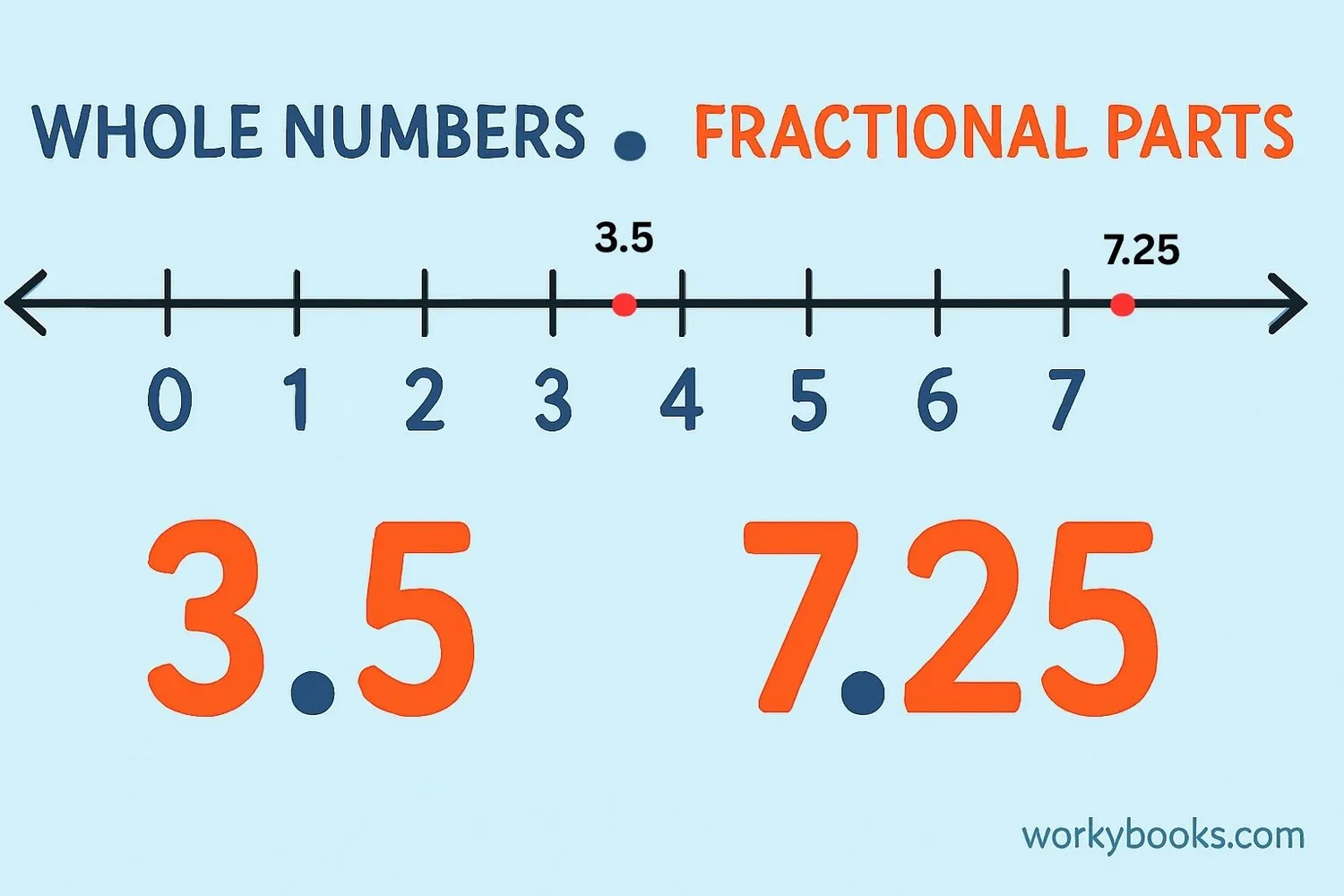
A decimal point is a dot (.) that we use in numbers to separate the whole number part from the fractional part. It's like a special marker that tells us where the whole numbers end and the parts of a whole begin.
For example, in the number 4.75:
- The "4" is the whole number (it means 4 whole things)
- The decimal point (.) separates the whole from the parts
- The "75" is the fractional part (it means 75 parts out of 100)
Decimal points help us write numbers that are between whole numbers. They let us show amounts that are not whole, like half of something (0.5) or three-quarters (0.75).
Key Concept
The decimal point separates whole numbers from fractional parts. Everything to the left of the decimal point is a whole number, and everything to the right represents parts of a whole.
Place Value with Decimals
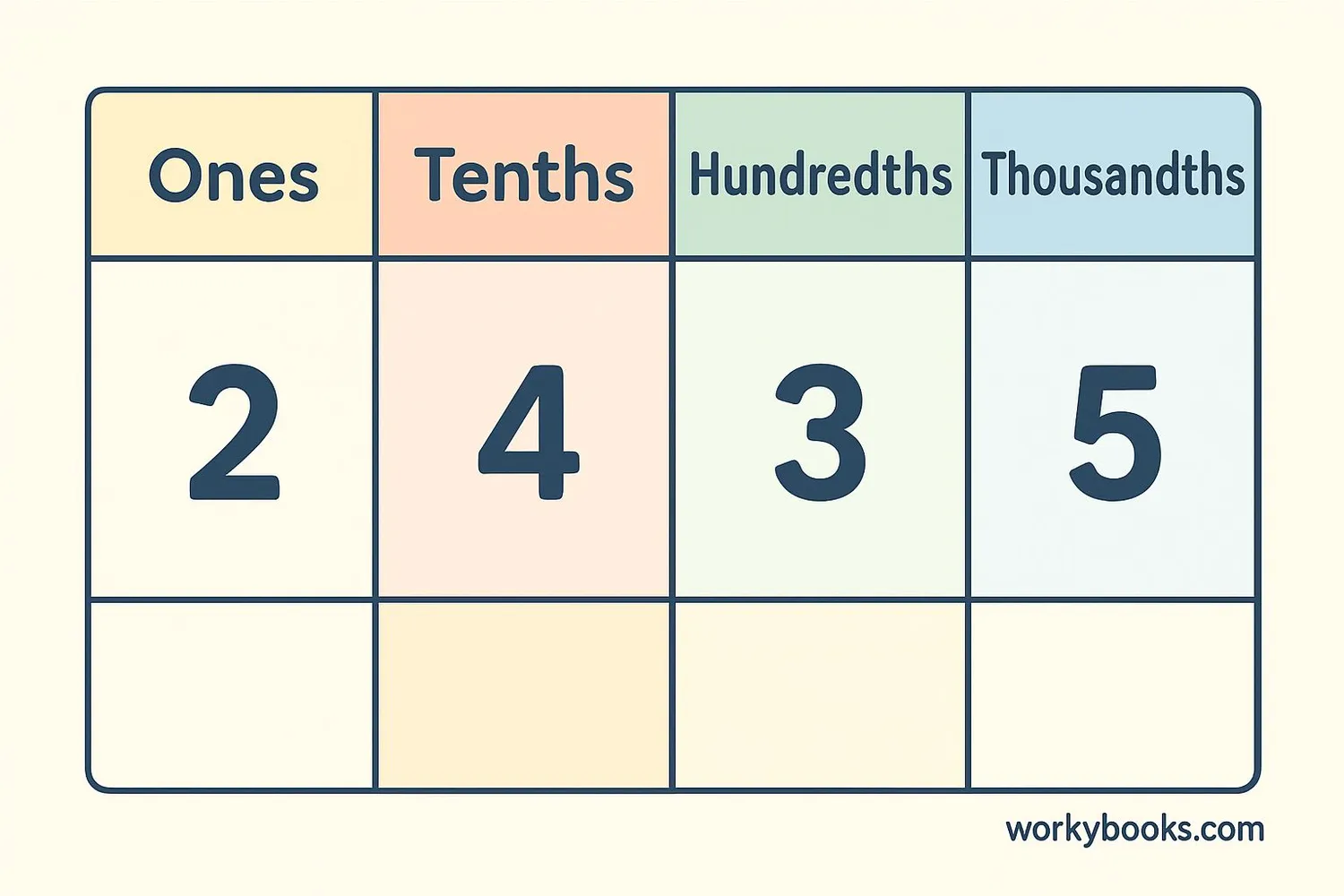
Just like whole numbers have place values (ones, tens, hundreds), decimal numbers have place values too! The places to the right of the decimal point have special names:
- Tenths (0.1): The first digit after the decimal point. One tenth is 1/10 or 0.1
- Hundredths (0.01): The second digit after the decimal point. One hundredth is 1/100 or 0.01
- Thousandths (0.001): The third digit after the decimal point. One thousandth is 1/1000 or 0.001
Each place is ten times smaller than the place to its left. So ten hundredths make one tenth, and ten thousandths make one hundredth.
Remember
As you move right from the decimal point, each place value is one-tenth of the place to its left. This pattern continues forever!
Decimal Separator
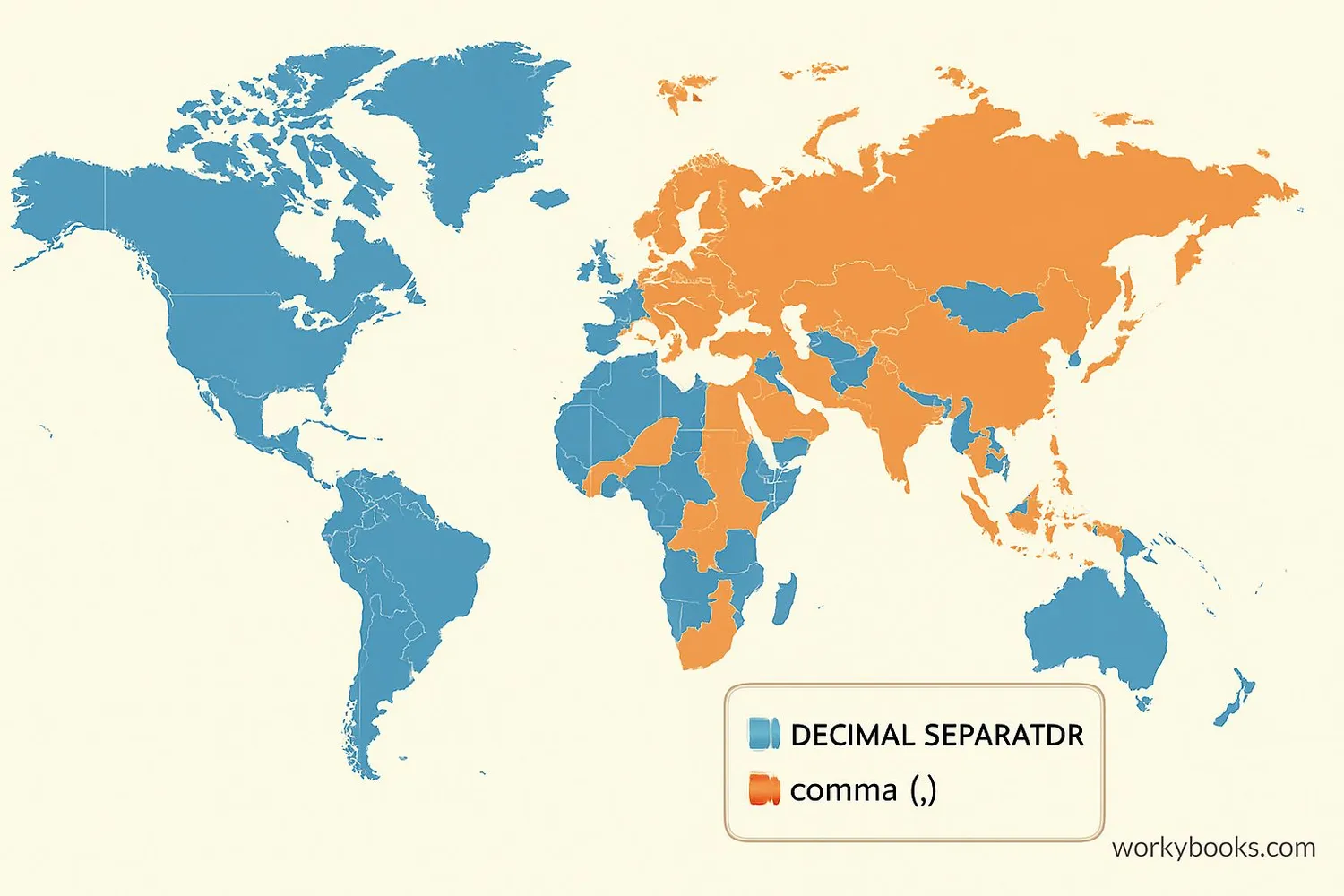
The decimal point (.) is the most common decimal separator used in the United States, United Kingdom, and many other countries. But did you know that some countries use a different symbol?
Different Decimal Separators:
- In the United States: 3.14 (three and fourteen hundredths)
- In France and Germany: 3,14 (three and fourteen hundredths)
It's important to know which separator is used in your country to avoid confusion. In math class in the US, we always use the decimal point (.).
The decimal separator helps us understand the value of numbers. Without it, we wouldn't know if 314 meant three hundred fourteen or three and fourteen hundredths!
Interesting Fact
In some countries, the roles are reversed - commas are used where we use decimal points, and points are used where we use commas in large numbers!
Reading Decimals
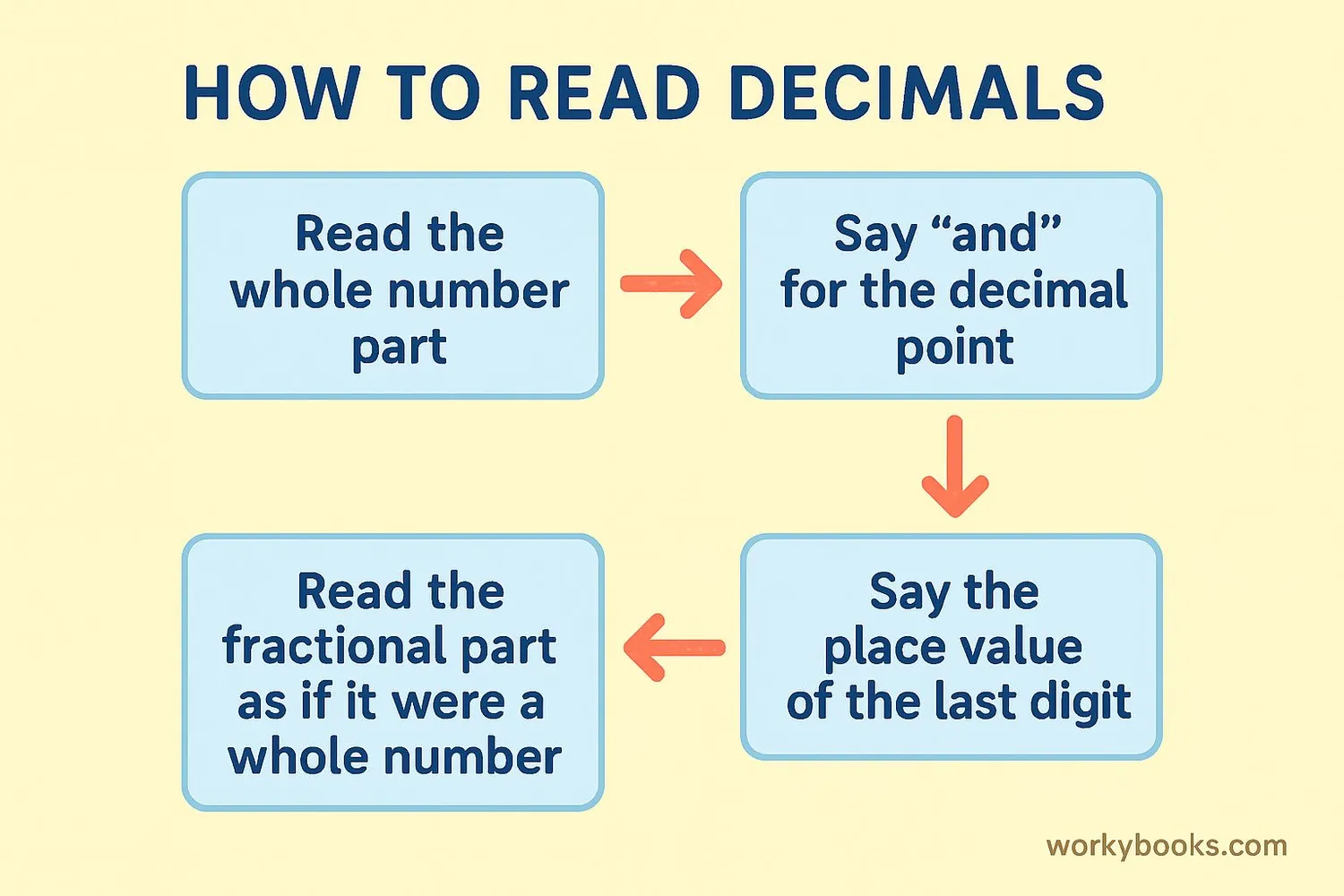
Reading decimals might seem tricky at first, but it's easy when you know the steps! Here's how to read decimals correctly:
Step-by-Step Guide:
- Read the whole number part (to the left of the decimal)
- Say "and" when you reach the decimal point
- Read the digits to the right of the decimal as if they were a whole number
- Say the place value of the last digit
Examples:
- 0.5 is read as "five tenths"
- 2.3 is read as "two and three tenths"
- 7.25 is read as "seven and twenty-five hundredths"
- 3.141 is read as "three and one hundred forty-one thousandths"
Remember that the decimal point is always read as "and." This helps separate the whole number from the fractional part.
Reading Tip
When reading decimals, look at the last digit to know what place value to say. If it ends in the hundredths place, say "hundredths." If it ends in the thousandths place, say "thousandths."
Decimal Point Examples
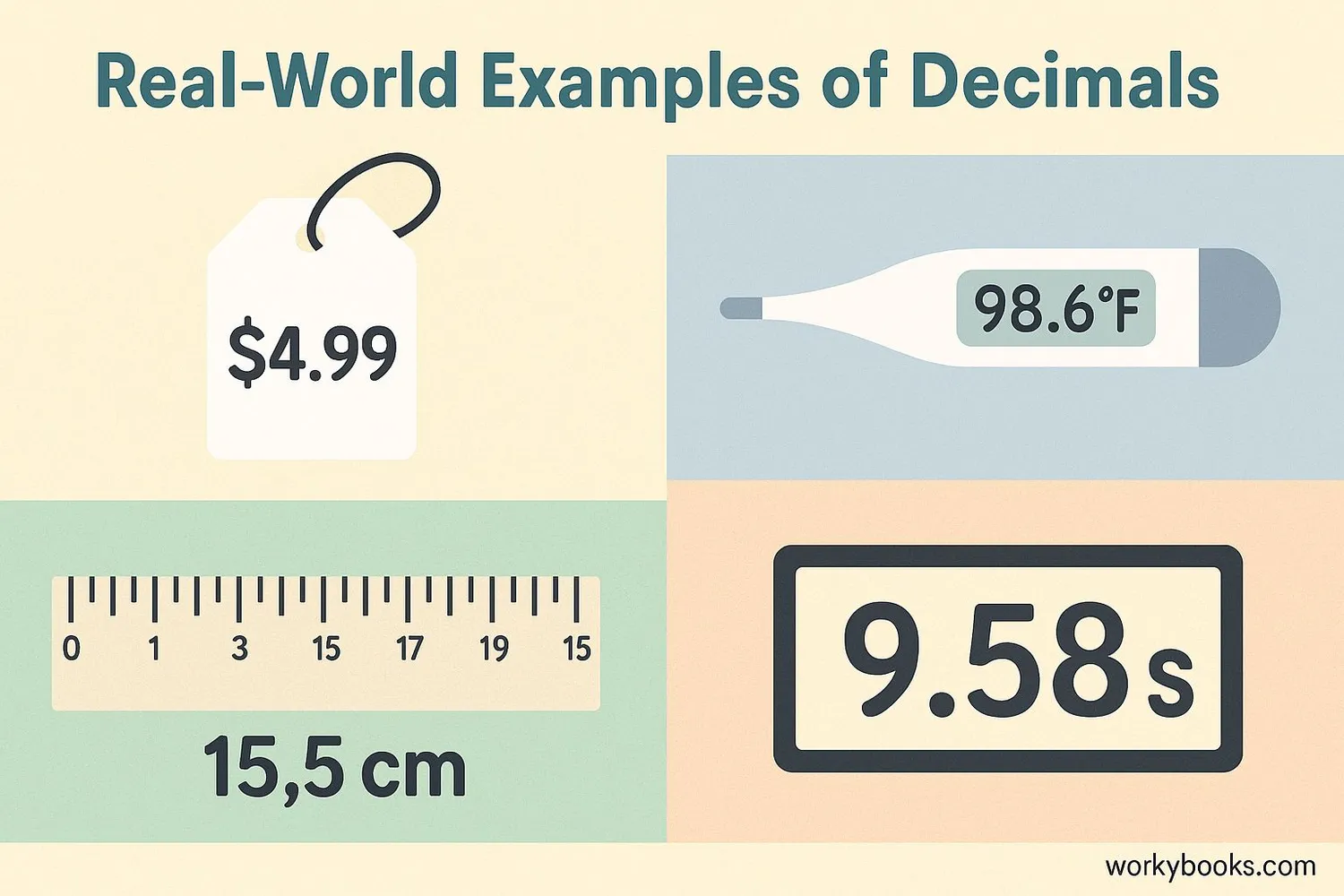
Decimals are everywhere in our daily lives! Here are some common examples where you'll see decimal points:
Money: Prices often use decimals. $4.99 means four dollars and ninety-nine cents. The decimal point separates dollars (whole) from cents (parts of a dollar).
Measurements: When measuring length, weight, or volume, we often get numbers with decimals. For example, a pencil might be 15.5 cm long, meaning 15 whole centimeters plus half a centimeter.
Temperature: Normal body temperature is 98.6°F. This means ninety-eight whole degrees plus six-tenths of a degree.
Sports: Race times often use decimals. A runner might finish in 9.58 seconds, meaning nine whole seconds plus fifty-eight hundredths of a second.
Cooking: Recipes often use decimals. You might need 1.5 cups of flour, which is one whole cup plus half a cup.
Practice looking for decimals around you - in stores, on road signs, in recipes, and in weather reports!
Real-World Tip
When you see a price ending in .99, it's just one cent away from the next whole dollar. This is why stores often use prices like $4.99 instead of $5.00.
Decimal Point Practice Quiz
Test your understanding of decimal points with this 5-question quiz. Choose the correct answer for each question.
Frequently Asked Questions
Here are answers to common questions about decimal points:
Decimal Trivia
Discover interesting facts about decimals and numbers:
Ancient Decimals
The decimal point was first used by mathematicians in the Islamic world in the 10th century. European mathematicians started using it regularly in the 16th century, helping to advance science and commerce.
Pi's Decimals
The mathematical constant Pi (π) has an infinite number of decimal places that never repeat. Computers have calculated Pi to over 100 trillion decimal places, but we usually only need 3.14 or 3.14159 for most calculations.
Decimal Currency
Before 1971, British currency used a complex system with 12 pence in a shilling and 20 shillings in a pound. The decimalization of currency made money calculations much simpler by introducing 100 pence in a pound.
Metric System
The metric system is based entirely on decimals. All units are related by powers of ten, making conversions between units (like meters to centimeters) as simple as moving the decimal point.





